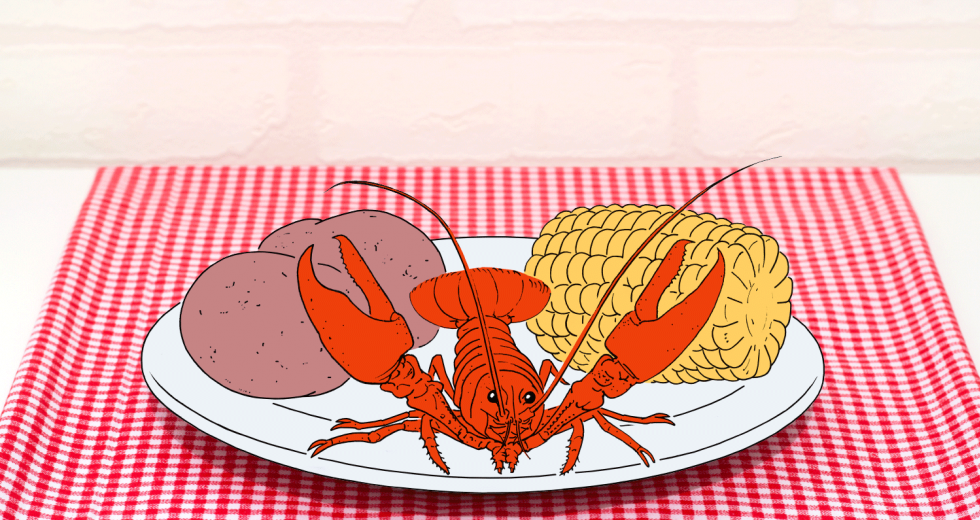How many generations does it take to belong somewhere? For the people born on U.S. soil, the law is pretty clear: only one. A pity then is the plight of the humble signal crayfish, pacifastacus leniusculus, who despite getting on more comfortably than even humans in the gentle climes of Northern California, is, and will seemingly always be, invasive.
The signal crayfish is a survivor. Its native range spans from Idaho river basins to coastal Washington. When transplanted elsewhere, it brings with it a reproductive and foraging prowess that decimates native species overnight. Sweden, the UK and elsewhere have seen populations of non-native signals explode to the detriment of local fauna, far beyond anyone’s intent. In London (where the midtown restaurant Pret A Manger imports 2,500 tons of processed Chinese crayfish per year) the British Broadcasting Corporation has enrolled celebrity chefs like Jamie Oliver and Gordon Ramsay to highlight the crises the invasive signals have caused local fish and get people eating them in an effort to control their numbers –– an effort likely to be in vain.
Alive, the signal crayfish is a green-mottled, rusty and blue-tinted crustacean. The claws on mature males contain tender nuggets of sweet meat. The tail contains a large muscle, which propels it through water and when cooked is delicate and creamy with that slight, pleasant stringiness of the muscle fibers that you can only enjoy in fresh shellfish.
It is a large, athletic crayfish, 2-3 inches long and about two ounces at lower elevations. Specimens caught in the high altitude of Lake Tahoe almost resemble lobsters, the signal’s ocean-bound cousin, but still its meat is milder and sweeter. And generally crayfish, with a ratio of 40 milligrams of omega-3 fatty acid to each microgram of mercury, are well within the Food and Drug Administration’s guidelines on healthy eating. But does knowledge that the signal is invasive necessarily mean it doesn’t belong? If, in the matter of a century, it has become one of the most abundant sources of high-quality protein in Northern California, shouldn’t we say that it belongs here — at least as much as we do? And shouldn’t the signals’ very abundance warrant a more prolific role in the region’s farm-to-fork movement?
The signal crayfish can be identified by the white, oval patch at
the base of each claw where the two parts of the pincers meet.
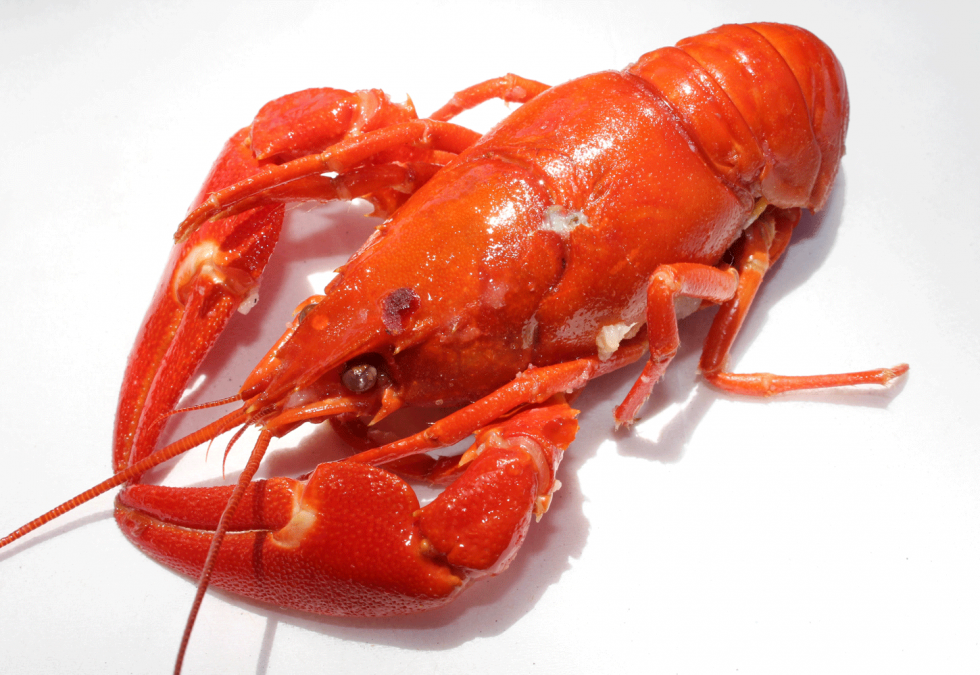
The Invasion
A 1995 study for the U.S. Fish and Wildlife Services found reports of signal sightings in California dating back to the late 19th century. The report goes on to state that the single largest known introduction of signal crayfish to the region happened in 1912, when scientists at the California Fish and Game Commission, studying their depredation on trout at a fishery in Berkeley, introduced the species to the San Lorenzo River near Santa Cruz, as well as into a private pond in Nevada County.
Neither the California Department of Fish and Wildlife or the UC Davis Center for Watershed Sciences were able to supply solid numbers on the state’s current signal population. Reports dating back to 2012 put the number around 300 million just in Lake Tahoe alone — meaning potentially far greater numbers spread through the vastness of the watersheds stretching from Lake Shasta all the way to Monterey, and the Lake Tahoe population experienced a 40 percent increase between 2006 and 2012, according to a New York Times article. In 2012, the state of Nevada approved commercial fishing of crayfish in Lake Tahoe in part to preserve water clarity, but the practice remains illegal in the two-thirds of Lake Tahoe that sits in California.
The signals have completely supplanted the Bay-native Sooty crayfish, (pacifasticus nigrescens), and has also all but driven to extinction the Shasta crayfish (pacifasticus fortis), California’s only remaining native crayfish. According to PG&E, fewer than 5,000 Shasta crayfish remain in the wild, protected for now by levees and blockades in Lake Shasta constructed in a collaboration of PG&E and other institutions.
“Once a species like the signal is introduced into an area [like the Delta], there isn’t really anything you can do to get rid of it that isn’t draconian,” says Ron Smith, California and Nevada Regional Aquatic Invasive Species Program coordinator for the U.S. Fish and Wildlife Service. He says that government programs on invasives tend to focus on preventing introduction of unwanted species rather than controlling or eliminating them.
Of the dozen or so researchers and government officials queried for this story, only one had any idea how to control them: a fish farmer. Occasionally, Ken Lawson of The Fishery, an aquaculture farm in Lodi, seins a pond completely –– dragging a net so that nothing can escape. Then he drains the water, causing the crayfish to burrow underground, before refilling it and deploying giant catfish to gorge themselves as their favorite snacks resurface through the mud. “We don’t even know how they got here,” says Lawson, referencing the crayfish’s ubiquitous presence in the landlocked ponds that use filtered water. But his fix is merely temporary: More crayfish, who can walk on land, simply stroll over and the cycle begins again.
Crayfish Cool
The range and depth of California’s diversity is perhaps, more than tech or Hollywood or beaches, our most distinguishing trait. People were here before the settlers, before the Gold Rush and then came from all directions: west over Donner Pass, east from China and Japan, from the Great Plains and beyond during the Dust Bowl, across the Rio Grande and Colorado Rivers, and from all points globally since the dawn of aviation.
The Elkhorn Saloon in West Sacramento serves the signal crayfish
at this year’s crawfish festival in June
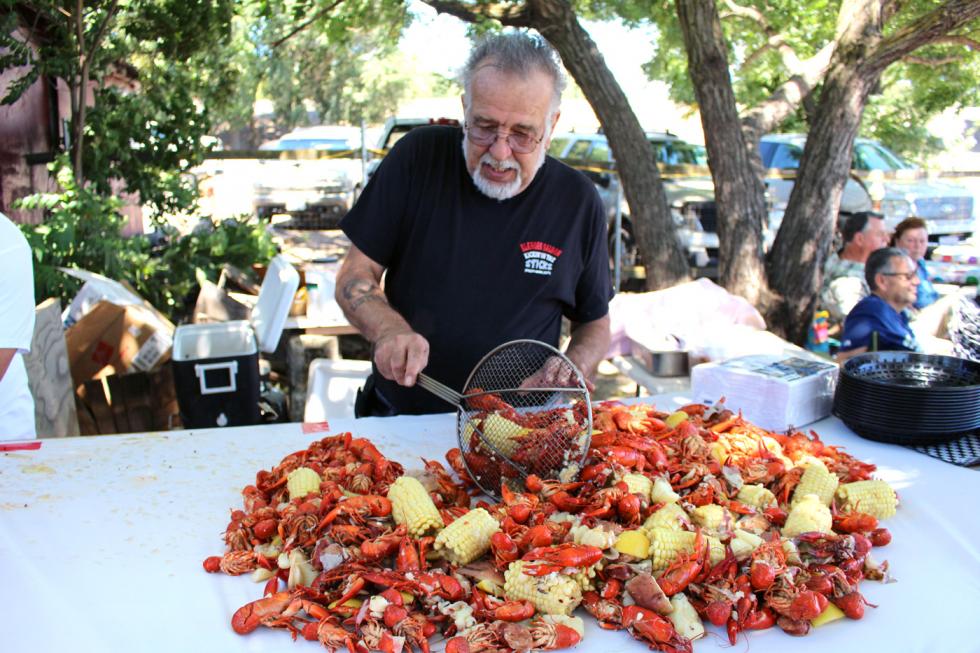
The confluence of all those cultures has, among other things, produced a culinary dish that bridges all gaps: the Asian-Cajun seafood boil. With the crayfish as its focus, these seafood boils are an explosive trend in both the region and around the globe. Winnie Vu is the marketing director for The Boiling Crab, a 12-year-old company with 12 of its 14 locations in California, including one in Sacramento.
“We started the whole thing,” she says, referring to the rising West Coast popularity of crayfish boils. “The thing is, I think people just think it’s Asian food because the owners are Asian. But we started with pretty traditional Louisiana style boils,” she says, adding that the restaurant has been using those same signature recipes for over a decade.
The distinctions between Asian and Cajun are so minimal as to be largely in our heads: Both use peppers, garlic and spices, but Cajun-style uses seasoning salt while a Chinese-style boil adds salt in liquid form via soy sauce, seasoned rice wine or fish sauce. In the wake of this accidentally-Asian Cajun trend, other vendors have fully embraced the serendipitous style: Firehouse Crayfish in south Sacramento, probably the area’s most crowded boil spot, has an original sauce called “Sweet Asian Cajun.” Elsewhere in Sacramento is a restaurant called, in fact, Asian N’ Cajun, and then another called Crab City — both establishments’ menus are virtually identical, despite variations in execution.
Flow to Fork
With its blended geographic roots, the crayfish boil is almost the most Californian thing ever. Giving it locavore street cred by using signal crayfish from the Delta would certainly push it over the top. But if you thought there was a correlation between the local crayfish population overwhelming our waterways and the rising popularity of Cajun-style boils, you’d be mistaken.
In south Sacramento you can find three restaurants specializing in crayfish within one strip mall complex: Firehouse Crawfish, Sac Crawfish and, the oldest of the three, The Boiling Crab. There are even more stretching from Stockton to San Jose — none of which, according to inquiries, serve the signal. At any one of the riverside restaurants in the Capital Region, you could, in theory, throw a bucket over the patio to catch your dinner while enjoying a cocktail. But only one of them, aptly named Crawdads on the River, serves signal crayfish from the Sacramento Delta.
“Once a species like the signal is introduced into an area [like the Delta], there isn’t really anything you can do to get rid of it that isn’t draconian.”Ron Smith, coordinator, U.S. Fish and Wildlife Service California and Nevada Regional Aquatic Invasive Species Program
Phil Clark has been trapping signal crayfish in the Delta for over 30 years. He says the vast majority of crayfish eaten in California come from somewhere between New Orleans and Houston — where they are both caught wild and farmed — or from China, where they are farmed and processed into packaged tail meat. Clark sells about 150 pounds of signal crayfish per week to distributors in San Francisco, and then much larger amounts for things like the Elkhorn Country Saloon’s annual crayfish boil, the E2 Family Winery Cajun Festival in Lodi –– which for years was held by the dilapidated Delta town of Isleton –– or the Sacramento Crawfish & Catfish Festival. Business also picks up during the lull in the New Orleans supply in October and November, but increasingly those sales are of the Louisiana-style red swamp crayfish (the procambarus clarkii), which are harvested as a co-product of rice paddies throughout the valley and do not thrive in the faster waters of the Delta proper.
Many, like Clark, have tried over the past decades to capitalize on what is clearly a phenomenon of readily-available (and by most accounts, incredibly delicious) protein. The signal’s status as invasive even eliminates any consumption guilt, so one would think it would have broad appeal to the environmentally-conscious locavore set. In reality, signals are few and far between on menus, even those touted as sustainable or farm-to-fork, but that wasn’t always the case.
The commercial signal crayfish fishery got started in the Delta in the 1970s with landings of 50 tons per year, reaching 250 tons per year in the 1980s, according to the 1995 U.S. Fish and Wildlife study. Many of them were destined for Sweden, which imported them as a delicacy to replace its fading local population of Noble crayfish, which were dying of crayfish plague. The signal importation led to the Noble population suffering a predictably similar fate to the Shasta and Sooty crayfishes. (It was later discovered that the signals themselves were a major vector of the very crayfish plague that compelled them to be imported in large numbers in the first place.)
When looking for reasons for the signal’s fall from popularity, many locals — from Clark, to officials from the Department of Natural Resources and the California Department of Fish and Wildlife officials, to restaurant employees — expressed enthusiasm that the question was asked but were unable to provide a hypothesis. Peter Moyle, a renowned marine biologist at UC Davis Center for Watershed Sciences, says that it’s unlikely anyone will have an official answer. “There isn’t a lot of money for projects that don’t involve endangered species,” he says.
Smith, from Fish and Wildlife, says businesses running a cost-benefit analysis of catching wild versus buying farmed crayfish quickly realize that it just isn’t worth it: “You’ve got someone going out into a river and spending all day catching maybe 50 or 60 pounds, versus an aquaculture operation where a couple guys can harvest 10,000 pounds in an afternoon — the math is really pretty simple.”
There’s another problem Smith points out: Once a commercial fishery is established, regulatory catch limits are placed in an effort to sustain the new industry, as he says happened with the Asian carp in the Mississippi Delta. “And that just ruins the entire point,” he adds. Indeed, it is the catch-22 that belies all historical efforts to eradicate an invasive species by consumption.
At a restaurant in the Delta town of Isleton, which operated as Ernie’s Cafe from the 1930s to 2006, the menu consisted of all things crayfish: sandwiches, omelettes, cocktails and the typical boils. According to the former owners, in its heyday, they would sell over a ton of locally-caught crayfish during holiday weekends, and more than five tons over their annual Father’s Day weekend crayfish festivals. After a sale and years of mismanagement, the restaurant now sits empty, the only remnant of its former glory being a 30-foot signal crayfish painted onto the building’s brick facade, welcoming the rare visitor to Main Street with a casual wave.
The Crayfish mural can be found on the side of Ernie’s Cafe in
Isleton. Now closed, the restaurant used to serve over a ton of
local crayfish over holiday weekend.
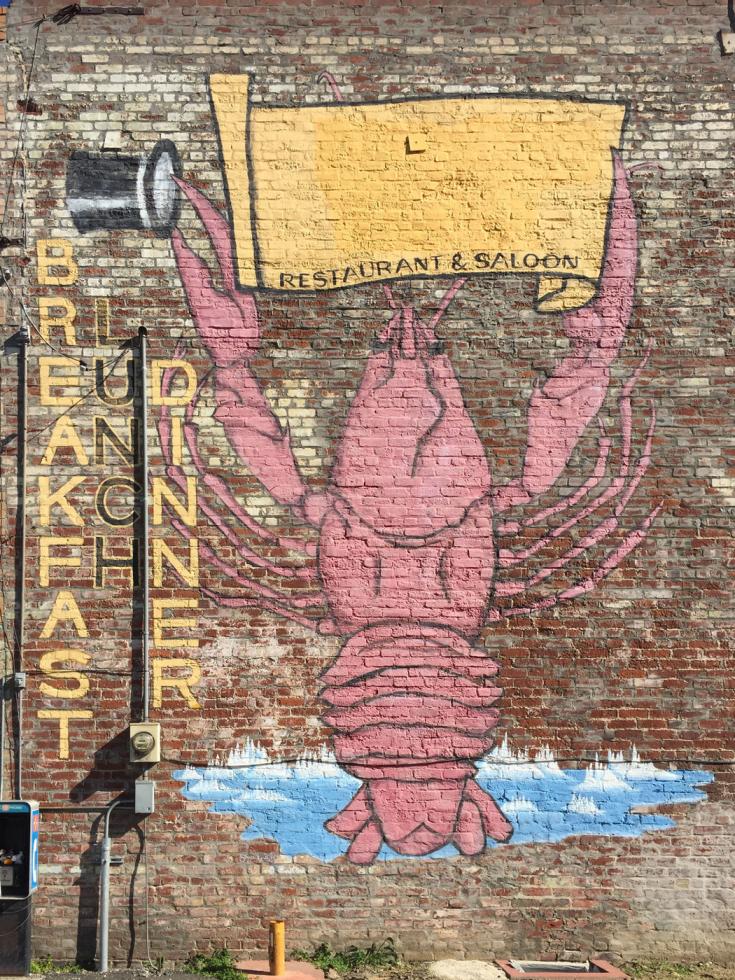
Editor’s note: In the original version of this article we mistakenly reported that The Boiling Crab had five of seven locations in California, instead of 13 of 14 locations. We regret the error.
Recommended For You
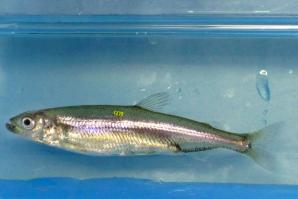
Delta Smelt Nearing Extinction
A U.C. Davis Lab could be the last refuge for the beleaguered, belittled fish
Tien-Chieh Hung, the director of the Fish Conservation and Culture Laboratory,, says the facility’s fish could serve as a sort of seed bank for repopulating the wild population, should conditions in the Delta ever improve.
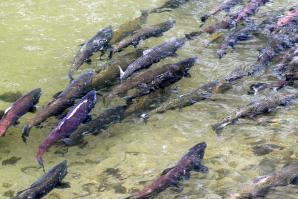
The Battle Upstream
Environmentalists work to preserve Chinook habitat
On the Yolo Bypass, just northwest of Sacramento, scientists and state and federal agencies are collaborating on a plan they hope could save California’s wild salmon.



